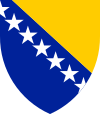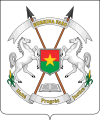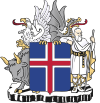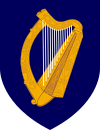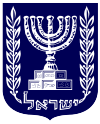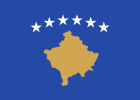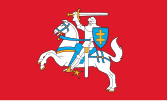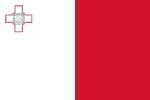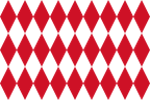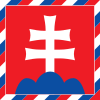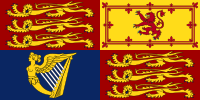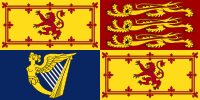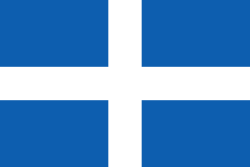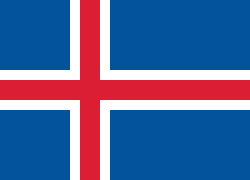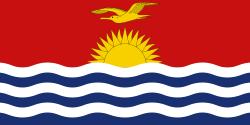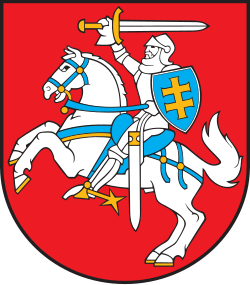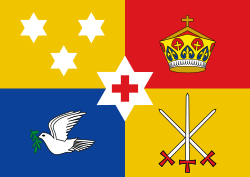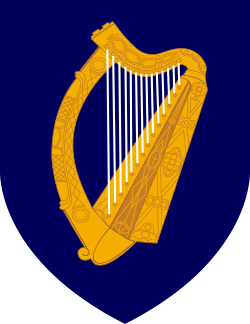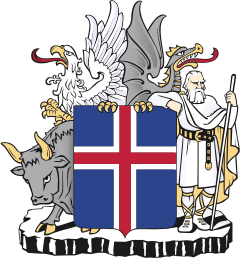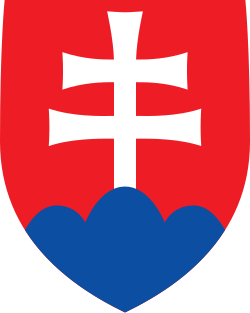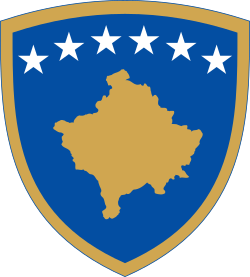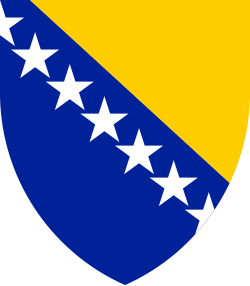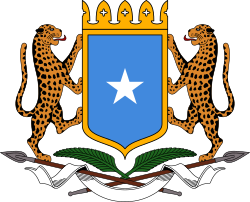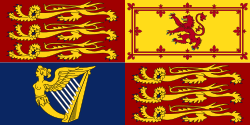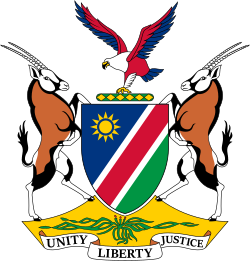Wappenbanner

In der Flaggenkunde wird als Wappenbanner (englisch Banner of the arms, Heraldic banner; Abkürzung BoA)[1] ein meist quadratisches Tuch (später auch rechteckig) mit einem Wappenbild bezeichnet, also die rechteckige Darstellung eines Wappens auf einem Tuch.[2]
Entwicklung
Wappenbanner sind eine der ursprünglichsten Formen von Flaggen. Erstmals wurden sie durch Adlige im Mittelalter verwendet. Daraus entstanden zum Beispiel die ersten Nationalflaggen Portugals und Spaniens. Heute finden sich Wappenbanner als Göschs bei verschiedenen Seestreitkräften, den Fahnen der Schweizer Kantone, Gemeindeflaggen und Amtsflaggen von Staats- und Regierungschefs. Nur fünf Nationalflaggen kann man heute noch als Wappenbanner bezeichnen: Jene der Schweiz, von Kiribati, Malta, des Kosovo und von Namibia. Ein Beispiel aus Deutschland ist die Flagge von Hamburg.
Beispiele nationaler Flaggen
Siehe auch
Einzelnachweise
- ↑ Flags of the World - Frequently Asked Questions - Part 1.
- ↑ Bundesverwaltung, Bevölkerungsschutz der Schweizerischen Eidgenossenschaft: Vexillologie (Fahnen II) - Fachbegriffe (PDF; 925 kB)
Weblinks
Auf dieser Seite verwendete Medien
Die Flagge Burkina Fasos
(c) Katepanomegas, CC BY-SA 3.0
Lesser coat of arms of the grand-duchy of Luxembourg.
| “ | Art.1er. Les armoiries du Grand-Duché de Luxembourg sont à trois échelons :
Art. 2. Les armoiries désignées à l’article 1er ci-dessus se composent des éléments héraldiques suivants :
|
” |
Flagge Namibias
Autor/Urheber: unknown, Lizenz: CC BY-SA 4.0
Wappen Portugals
SVG version of en:Image:Monaco_flag_with_lozenges.png (now deleted as superseded). The diamond pattern came from User:Denelson83.
Autor/Urheber: Philip Allfrey, Lizenz: CC BY-SA 2.5
Banners of Knights of the Thistle, hanging in St Giles Cathedral in Edinburgh.
The Standard of the President of Israel, made according to the FOTW site.
Coat of arms of Malta.
Arms of Ireland. Blazon: Azure, a harp or stringed argent. With 14 strings shown.
Wappen von Island
Autor/Urheber: Jsobral, Lizenz: CC BY-SA 4.0
Personal Standard of Emperor and King Peter IV of Portugal (Peter I of Brazil)
Wappen der Slowakei
Presidential Flag of Ireland with alternate official state harp design
Wappen Gabuns
Autor/Urheber: Government of the Republic of Kosovo (current image) Cradel (old current version), earlier versions by Aotearoa and B1mbo, Lizenz: CC BY-SA 3.0
Emblem of the Republic of Kosovo
Autor/Urheber: Eigenes Werk, Lizenz: CC BY-SA 4.0
Royal Standard of the United Kingdom for use in Scotland.
Flag of the President of Slovakia
Emblem of Israel, alternative version as used on the Hebrew website of the Israeli Supreme Court.
Wappen Griechenlands seit 7. Juni 1975.
Autor/Urheber: FDRMRZUSA (Diskussion · Beiträge). See sourced file for original author., Lizenz: CC BY-SA 4.0
Flag of the Kingdom of Portugal (1485–1495) type 2: CASTLES VARIANT.
Autor/Urheber: Diese Vektorgrafik wurde von v mit Adobe Illustrator erstellt., Lizenz: CC0
Standard of the President of Gabon (1960 - 1990)
Simplified image of arms of Poland; the official arms can be seen at: Coat of arms of Poland-official.png
Autor/Urheber: Eigenes Werk, Lizenz: CC BY-SA 4.0
Royal Standard of the United Kingdom
Autor/Urheber: F l a n k e r, Lizenz: CC BY-SA 3.0
coat of arms of Burkina Faso.
Coat of Arms of Switzerland.
The "triangular" shield shape was frequently used by the federal administration throughout the 20th century, and adopted officially (as emblem of the federal administration, not necessarily as emblem of Switzerland as sovereign entity) in 2017. Precedents for this shield shape go back to designs dated to as early as 1815.
The official coat of arms of the Swiss Confederation is a white couped cross in a red heraldic shield, without explicit specification of the shape of the shield, and a variety of shield shapes are in use.Tongan coat of arms

